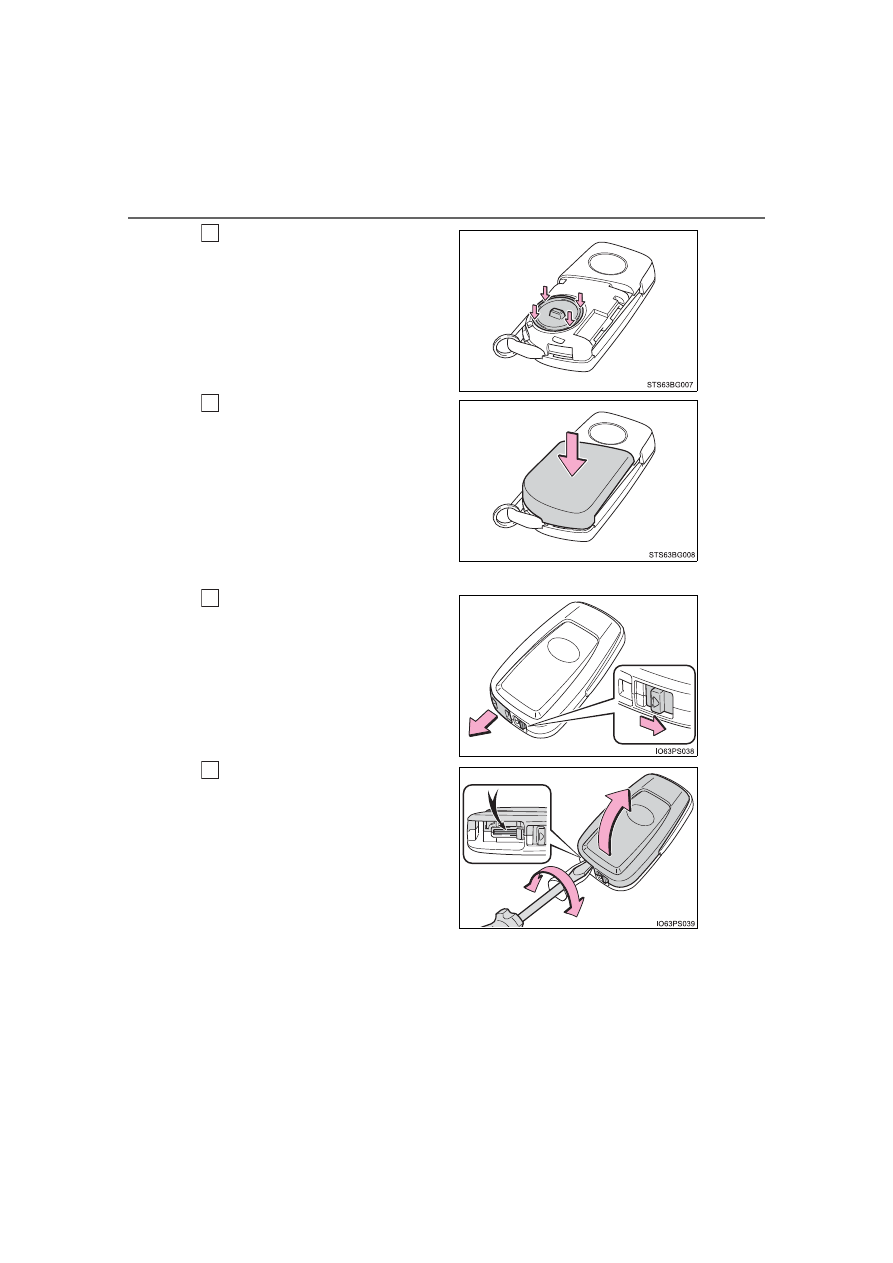Toyota C-HR (2021 year). Manual in english - part 7

398
6-3. Do-it-yourself maintenance
C-HR_OM_USA_OM10684U
Install the battery cover with the
tab facing up.
Push the entire edge of the battery
cover into the key.
Install the key cover.
Align the key cover with the key
and then press it straight into the
key.
Make sure that the key cover is
securely installed without any gaps
between it and the key.
Vehicles with a smart key system
Release the lock and take out
the mechanical key.
Remove the cover.
Use an appropriate sized flathead
screwdriver. Forceful prying may
deform the cover.
To prevent damage to the key,
cover the tip of the screwdriver with
a rag.
4
5
1
2